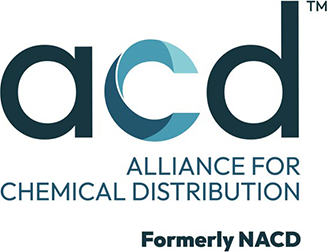Whether your business is manufacturing base and specialty chemicals or involved in the distribution and delivery of products to the end user, you need a strong packaging strategy. Supply chain complexities and mapping differences often require different approaches to bulk packaging.
As you consider container options for the storage and transportation of chemicals and liquid materials, there are many factors that should be evaluated to ensure your supply chain is as efficient as possible while supporting the needs of the end customer and circular economy.
1. Packaging Type
Drums, plastic one-ways, biodegradable containers, reusable IBCs, injection units, ISO tanks, and others are often the most common choices for chemical storage; but which is truly the most effective and sustainable option for your production needs?
2. Reuse vs. Disposal
Can the containers you choose be cleaned, serviced, and reused or will they be disposed of in landfills?
3. Transportation
Packaging can be stacked or palletized, handled manually or by forklift, and varies in how it is secured for transport. What is the right option for safely transporting hazardous and non-hazardous chemicals?
4. Handling
Significant manpower and labor are common in chemical operations. Which packaging type will reduce overall handling and in turn, reduce the risk of injury or accident?
5. Storage
How your containers are stored—onsite, offsite, covered, or open storage—will drive costs up, especially if there are lease fees incurred from third-party facilities. How can storage efficiency be optimized?
6. Tracking & Security
Due to company and/or regulatory requirements, some chemicals require volume, temperature, humidity, and location tracking. How will you implement technology to support these regulations?
7. Cost Metrics
Do you know the required quantity of each packaging type needed based on your forecasted production amount?
A truly effective packaging strategy with a focus on sustainability will help your business in the following areas:
- Cost Reduction: Eliminating one-way packaging and right-sizing your fleet allows you to remove unnecessary costs related to disposal and unproductive assets.
- Operational Safety Planning: Ensuring packaging solutions meet product safety requirements in line with UN/DOT regulations provides secure delivery and transportation.
- ESG Alignment: Contributing to sustainability goals and objectives allows for a positive environmental, social, and economic impact.
- Lifecycle Control: Reducing company risk is done through standardized and controlled processes, from raw material delivery to finished products.
- Future Growth: Aligning current operational needs to future demands provides stability in fluctuating market conditions.
If you are already experiencing many of the benefits outlined above, it sounds like your packaging strategy is fully optimized and in a great position; however, if not, and you find you’re often adjusting packaging to meet the fluctuating demands of your production without a holistic approach, you’re missing out on the tremendous value a packaging strategy provides.
Have questions on how you can further optimize your existing strategy, or are you in interested in an analysis with Hoover CS? Contact us today.


